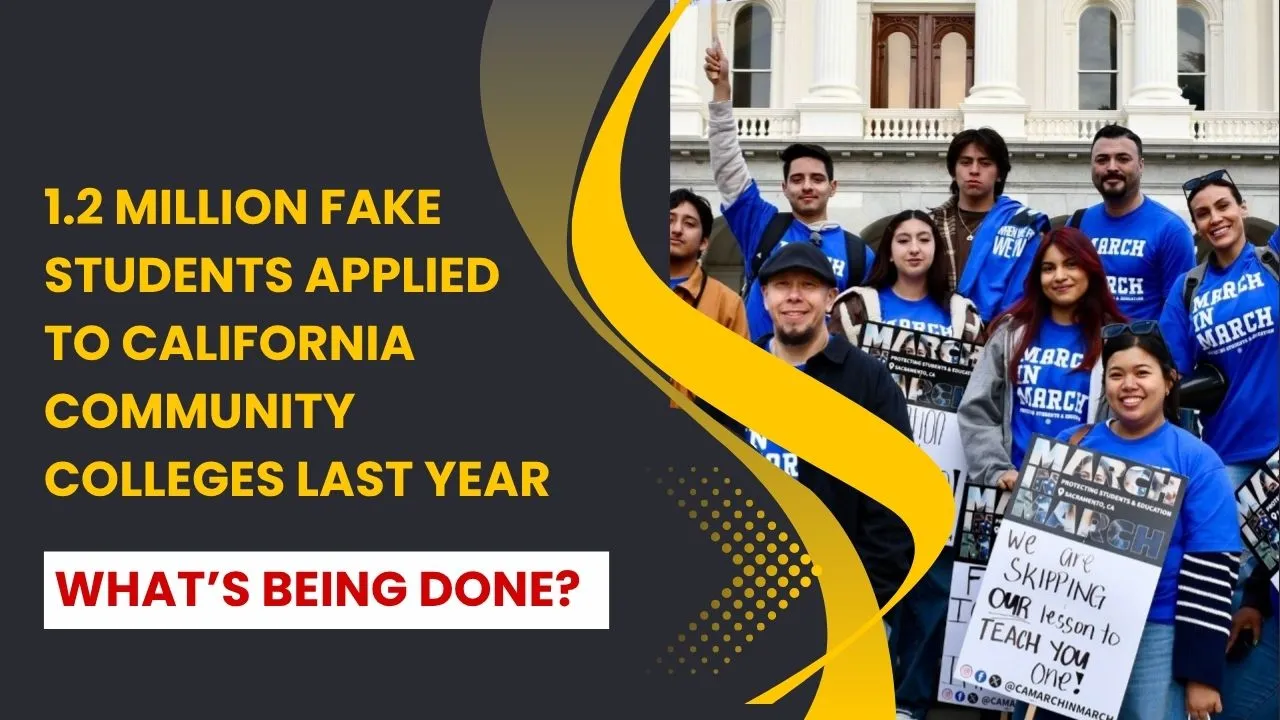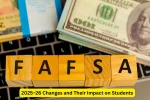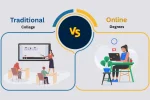Fake Students California Colleges: California’s community college system is facing a crisis. In 2024, about 1.2 million fake students—nearly one-third of all applicants—submitted fraudulent applications. These bogus entries are not harmless: they siphoned off more than $10 million in financial aid, filled classroom seats that should go to real students, and bogged down college staff who could otherwise support genuine learners. As colleges embraced open-access policies and digital environments, scammers seized upon these structures, prompting urgent efforts to protect students and public funds from abuse.
Fake Students California Colleges
The surge in Fake Students California Colleges applications reveals deep vulnerabilities in our educational system. Fraudsters are exploiting open admissions and online learning formats by using bots and AI-generated identities to apply en masse, collect financial aid, then vanish before ever attending class. In response, California plans a $10 application fee (with waivers for low-income applicants), upgraded fraud detection tools, and a new partnership with ID.me for ID verification. At the federal level, live ID checks for aid disbursement take effect in fall 2025. A full system redesign is scheduled by spring 2026 to safeguard integrity while retaining accessibility.
Overview Table: 2024 Fake Application Stats
| Category | Details |
| Total Applications | ~3.87 million |
| Fake Applications | ~1.2 million (31%) |
| Federal Aid Misappropriated | ~$8.4 million |
| State Aid Involved | ~$2.7 million |
| Fraud Tactics | Bots, AI identities, stolen personal data |
| Impact | Legitimate students waitlisted, aid delays |
| Proposed Application Fee | $10, with waivers for eligible applicants |
| Tech Solutions | Fraud detection, ID.me integration |
| Federal Identity Requirement | Live ID verification starting fall 2025 |
| System Overhaul | Full redesign by spring 2026 |
The Rise and Impact of Fake Student Applications
Fake student applications go far beyond digital nuisances. Organized fraud rings use bots and tweaked identities to file thousands of applications, claim financial aid, then disappear. This isn’t just nominal damage—it ruins enrollment records, sidelines real students, and wastes staff time.
Key consequences include:
- Fake students occupy seats that otherwise belong to real learners
- Financial aid disbursements are lost to fraud
- Staff must investigate fraudulent activity instead of assisting legitimate needs
In short, financial aid fraud distorts both education access and institutional resources.
How Fraudsters Exploit the System
These scams are alarmingly systematic:
- Mass applications: Automated systems generate scores of fictional student profiles.
- Aid collection: These identities collect financial aid disbursements.
- Disappearance: Fraudsters vanish before the start of actual classes.
Often, this “phantom enrollment” lasts just enough time to collect funds, leaving empty promises and fiscal gaps behind.
How Much Aid Is Being Lost?
Fraudulent applications resulted in:
- $8.4 million in federal aid expenditures
- $2.7 million in state aid losses
These sums are significant, siphoning important funding away from genuine applicants who depend on financial assistance.
Steps Taken to Prevent Fraud
California and federal agencies are deploying multifaceted tactics:
1. Overhaul of Application Process
By spring 2026, a redesigned application portal with fraud detection tools will screen out bots and questionable submissions before enrollment.
2. Application Fee with Equity Measures
A modest $10 application fee is under consideration. To ensure fairness, fee waivers or reimbursements are planned for low-income applicants.
3. Identity Verification
California now works with ID.me, requiring government-issued ID before enrollment. Federally, live ID checks begin fall 2025 to release financial aid only to verified individuals.
4. On-Campus Vigilance
College employees are being trained to detect irregular records or attendance patterns indicative of fake enrollees.
This approach ensures both security and fair access remain priorities.
Federal Measures and Challenges
The U.S. Department of Education is reinforcing identity verification:
- Starting fall 2025, live ID checks are mandatory before disbursing aid
- Colleges must retain copies of government IDs for audit trails
However, effective enforcement may be complicated by staffing shortages and organizational restructuring at the federal level.
Real Students Take the Hit
The most significant fallout affects legitimate students:
- Classroom crowding from phantom enrollees
- Delayed financial aid while investigations take place
- Educator and administrative burnout due to fraud investigations stealing time from core duties
Digital learning’s convenience also provides cover for these scams, making robust countermeasures essential.
Why This Issue Matters
This isn’t just a problem of numbers—it’s a battle for educational fairness and financial stewardship. When aid is diverted, real students lose opportunities, colleges become less efficient, and public trust erodes. California’s strategy aims to protect both people and principles across its community college network.
Frequently Asked Questions (FAQs)
1. Why is this much-needed action on fake student applications important?
Because these scams drain aid resources, block real students, and weaken trust in open-access education.
2. How are fraudsters tricking colleges?
By using bots, AI-generated identities, and stolen data to create false profiles and claim aid without ever attending.
3. What are the main countermeasures being introduced?
California is implementing a $10 application fee—with waivers—and integrating fraud detection and ID.me verification. Federally, live ID checks start in fall 2025.
4. Will the application fee affect needy students?
No. Fee waivers, credits, or reimbursements are part of the plan to preserve access for low-income applicants.
5. When will the new protections be fully in place?
Federal ID checks begin fall 2025; California’s fully redesigned system is scheduled for spring 2026.
Final Thoughts & Call to Action
The wave of fake student applicants poses a serious threat to the integrity and fairness of California’s community colleges. Yet, California isn’t standing idle. With improved tools, fair policies, and collaborative efforts across state and federal levels, the tide can turn.
What can you do?
- Stay informed: Follow policy changes and updates
- Spread awareness: Share information with classmates and families
- Be vigilant: Report suspicious activity within educational institutions
- Support balanced reforms: Advocate for measures that protect both access and accountability
Let’s ensure that education funding reaches the deserving. Together, we can uphold the promise of equitable learning.















